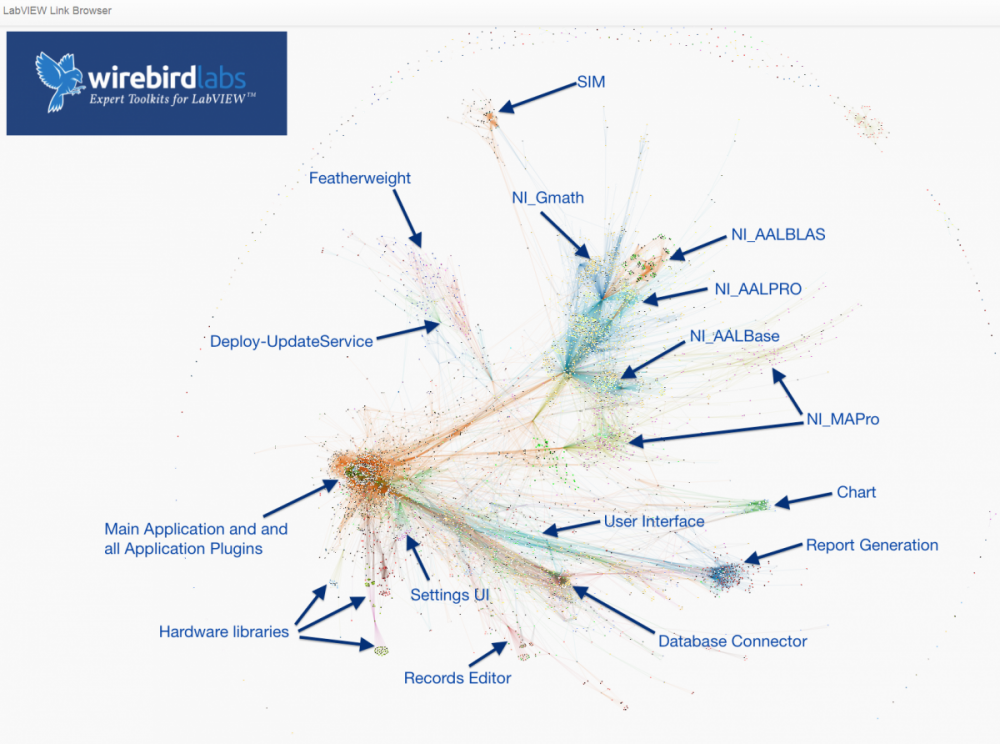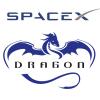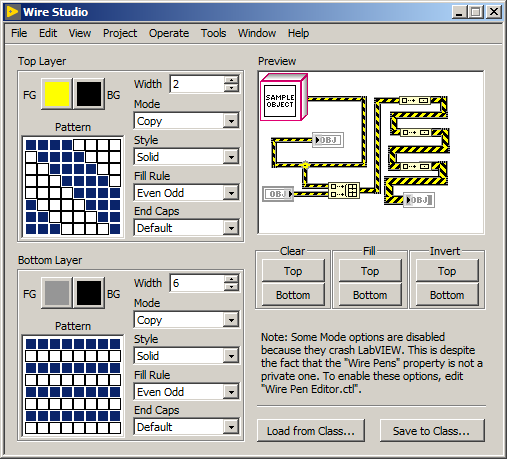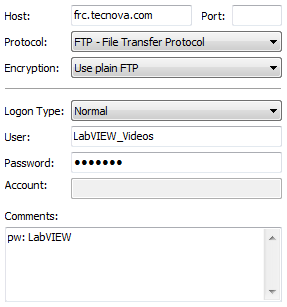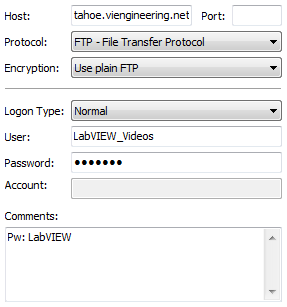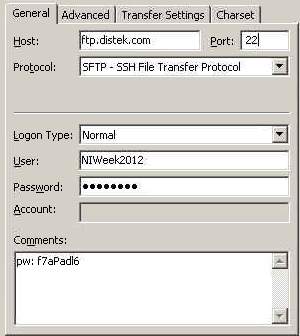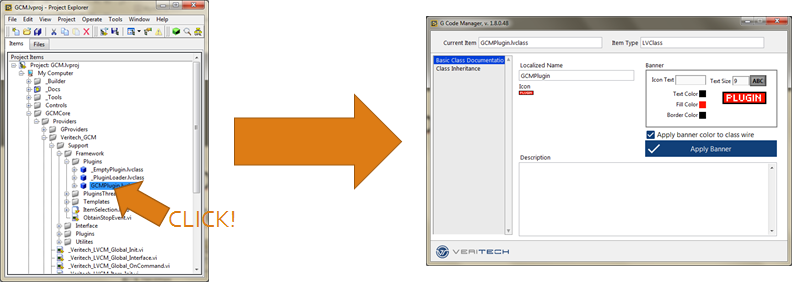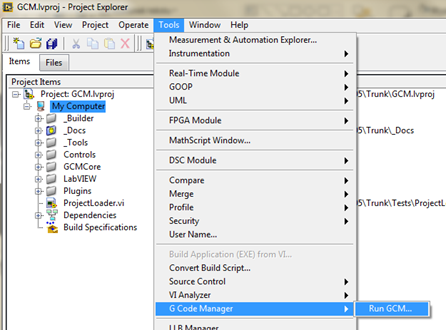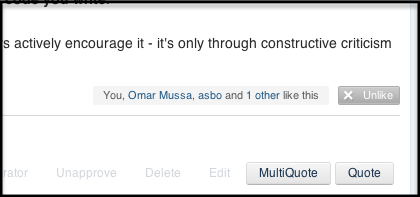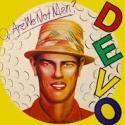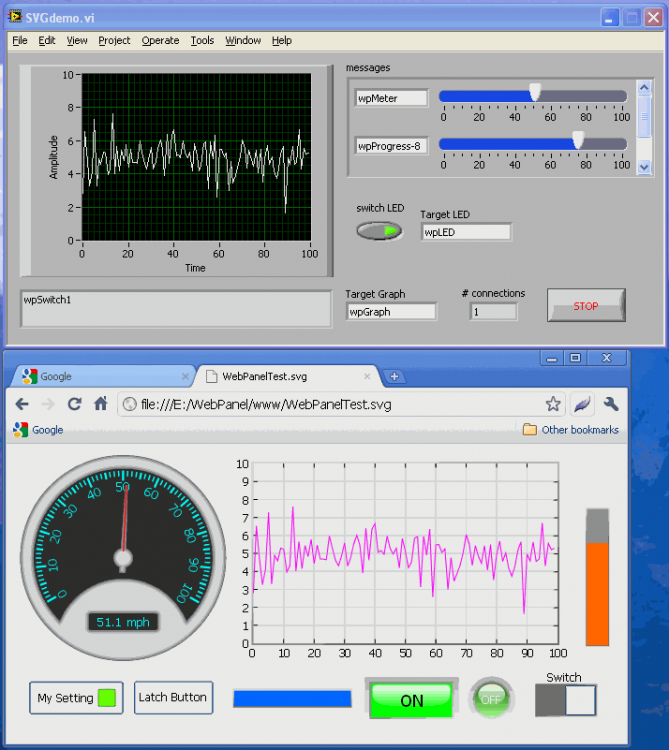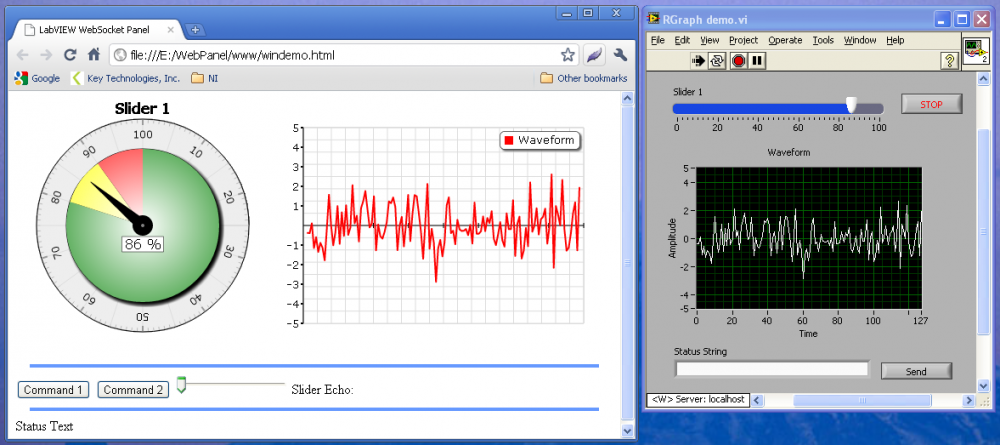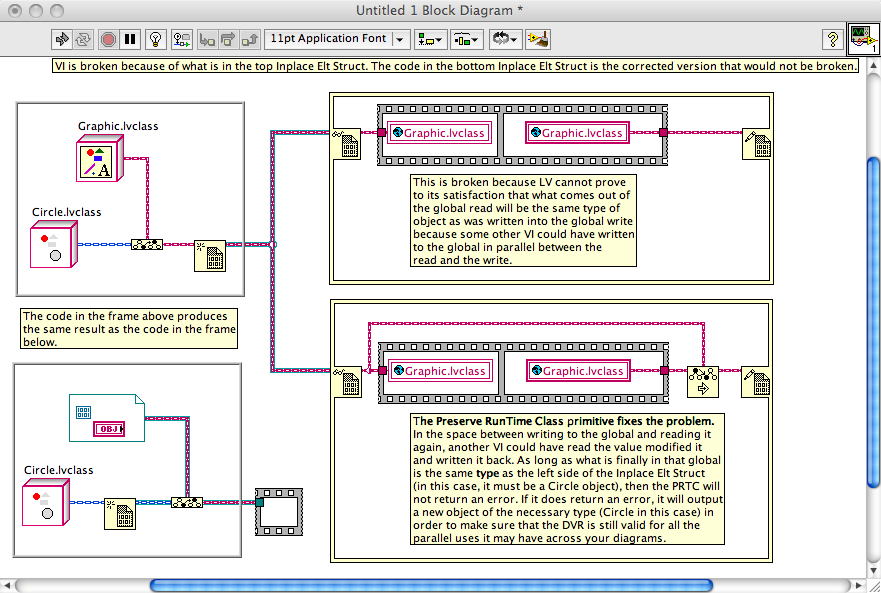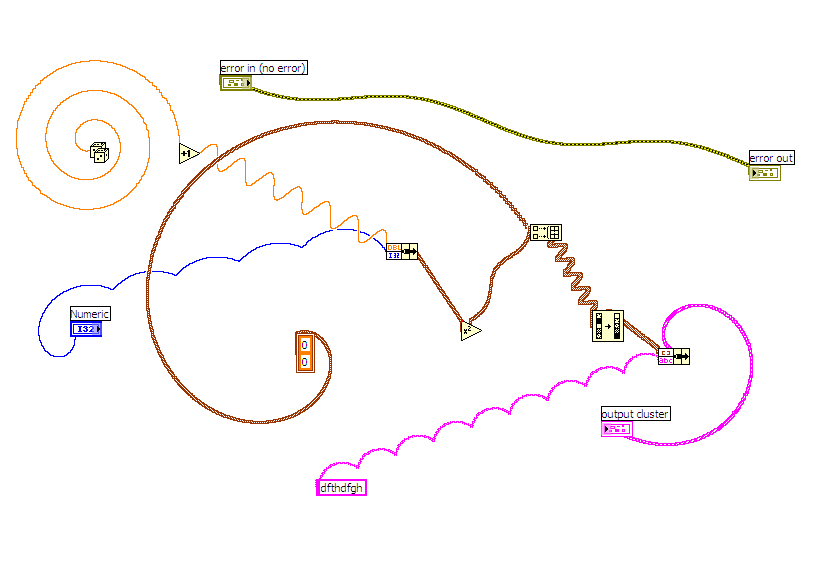Leaderboard
Popular Content
Showing content with the highest reputation since 06/29/2009 in Posts
-
After I made this post I decided to bring the LabVIEW Wiki back online. It was not easy and took several days of server upgrades and hacking. The good news is I was able to bring up all the original pages.. The even better news is I talked with @The Q and @hooovahh and we are all on the same page as to how to move forward. @The Q did a great job of stepping forward and trying to fill the void that the LabVIEW Wiki's absence had left. He's agreed to migrate all the new content he created over to the LabVIEW Wiki, from Fandom and continue to develop new articles and content moving forward on the new site. He will also help in moderating the Wiki and will be promoted to Admin rights on the Wiki. His help is much appreciated. The LabVIEW landing page created here on LAVA is awesome but the forums don't lend themselves to static content creation. Instead @hooovahh has agreed to move the old landing page to here. That will be the new home for the landing page. This will become a valuable resource for the community and I hope all of you start pointing new people in that direction. With many editors, it can only get better and better over time. Where do we go from here: Logging in. - The old accounts are still there. If you're a LAVA old-timer, then you can try to login using your LAVA username. If the password doesn't work then reset it. You can also create a new account here. I'm going to announce a day when new accounts can be created. I'm limiting it for now because of all the spam accounts that can be potentially created. There's an issue with the current Captcha system. if you are super-eager to start creating content now and want to help, send me a direct message on LAVA and I can manually create an account right away. - New account creation is now open. Permitted content: - I'm not going to put restrictions on content at the moment. Obvious vandalism or offensive\illegal content will not be tolerated of course. However, the guidelines will be adjusted as time goes on and new content is created. There's just not enough content right now to be overly concerned about this. We need content. Discussions about the Wiki. - Each article page has an associated discussions page where you can discuss issues related to that article. Please use that mechanism (same etiquette as wikipedia). General Wiki issues\questions and high level discussions can be done here. So now, if you need to add content, you can do it yourself. Feedback as always is welcome.20 points
-
Dear Santa NI I am now in my 40s with youngish kids, so despite the fact that all I got for Christmas this year was a Pickle Rick cushion I am not actually complaining. However, I would like to get my order in to the Elves as early as possible. This is my wishlist, in no particular order. I expect this list will not be to everyone's taste, this is ok, this is just my opinion. Make LabVIEW free forever. The war is over, Python has won. If you want to be relevant in 5 to 10 years you need to embrace this. The community edition is a great start but is is probably not enough. Note: I accept it might be necessary to charge for FPGA stuff where I presume you license Xilinx tools. NI is and has always been a hardware company. Make all toolkits free. See the above point. Remove all third party licensing stuff. Nobody makes any money from this anyway. Encourage completely open sharing of code and lead by example. Take all the software engineering knowledge gained during the NXG experiment and start a deep refactor of the current gen IDE. Small changes here please though... we should not have to wait 10 years. Listen to the feedback of your most passionate users during this refactor. NXG failed because you ignored us and just assumed we would consume whatever was placed in front of us. I am talking about the people like those reading this post on Christmas day and their spare time because they are so deeply committed to LabVIEW My eyes are not what they used to be, so please bring in the NXG style vector graphic support so I can adjust the zoom of my block diagram and front panel to suit accordingly As part of the deep refactor, the run-time GUI needs to be modernised. We need proper support for resizable GUIs that react sensible to high DPI environments. Bring the best bits of NXG over to current gen. For example the dockable properties pane. (Sorry not much else comes to mind) Remove support for Linux and Mac and start to prune this cross compatibility from the codebase. I know this is going to get me flamed for eternity from 0.1 % of the users. (You pretty much made this decision for NXG already). Windows 10 is a great OS and has won the war here. Get rid of the 32-bit version and make RT 64-bit compatible. You are a decade overdue here. Add unicode support. I have only needed this a few times, but it is mandatory for a multicultural language in 2021 and going forward Port the Web Module to Current Gen. All the news I have heard is that the Web Module is going to become a standalone product. Please bring this into Current Gen. This has so much potential. Stop adding features for a few years. Spend the engineering effort polishing. Fix the random weirdness we get when deploying to RT Open source as many toolkits as you can. Move the Vision toolkit over to OpenCV and make it open source Sell your hardware a bit cheaper. We love your hardware and the integration with LabVIEW but when you are a big multiple more expensive than a competitor it is very hard to justify the cost. Allow people to source NI hardware through whatever channel makes most sense to them. Currently the rules on hardware purchasing across regions are ridiculous. Bring ni.com into the 21st century. The website is a dinosaur and makes me sad whenever I have to use it Re-engage with universities to inspire the next generation of young engineers and makers. This will be much easier if the price is zero Re-engage with the community of your most passionate supporters. Lately it has felt like there is a black hole when communicating with you Engineer ambitiously? What does this even mean? The people using your products are doing their best, please don't patronise us with this slogan. Take the hard work done in NXG and make VIs into a non-binary format human readable so that we can diff and merge with our choice of SCC tools Remove all hurdles to hand-editing of these files (no more pointless hashes for "protection" of .lvlibs and VIs etc) Openly publish the file formats to allow advanced users to make toolkits. We have some seriously skilled users here who already know how to edit the binary versions! Embrace this, it can only help you. Introduce some kind of virtualenv ala Python. i.e. allow libraries and toolkits to be installed on a per-project basis. (I think this is something JKI are investigating with their new Project Dragon thing) For the love of all that is holy do not integrate Git deeply into LabVIEW. Nobody wants to be locked into someone else's choice of SCC. (That said, I do think everyone should use Git anyway, this is another war that has been won). That is about it for now. All I want is for you guys to succeed so my career of nearly 20 years does not need to be flushed down the toilet like 2020. Love you Neil (Edited: added a few more bullets)16 points
-
The content on this page will go away soon. It's currently being migrated. > New Location < Read about the wiki here This thread is intended to be a place for all things LabVIEW to be able to be found. If you have a resource for LabVIEW feel free to reply with your own content. We are interested in things like person blogs, forums, training information, and anything a user of LabVIEW might want. Several links and sections have been lifted from another resource available over on NI labeled the Content and Communities for LabVIEW Application Development. I'm New To LabVIEW and Need Help Basic Training Information NI Learning Center NI Getting Started -Hardware Basics -MyRIO Project Essentials Guide (lots of good simple circuits with links to youtube demonstrations) -LabVEW Basics -DAQ Application Tutorials -cRIO Developer's Guide Learn NI Training Resource Videos 3 Hour LabVIEW Introduction (Alternate Google Drive) 6 Hour LabVIEW Introduction (Google Drive) Self Paced training for students Self Paced training beginner to advanced, SSP Required Rookie Mistakes in LabVIEW by Digilent State Machine Design Pattern Basic Tutorial Wikipedia Article Sixclear Video Event Driven Design by NI Beyond Basic Training These are topics that are useful but not for those new to LabVIEW or software development. Topics may cover things a novice may have a hard time following. Object Oriented Software Design NI FAQ on Object Oriented Programming Creating Classes When Should you Use Classes Abstraction Abstraction Distraction Introduction to Object Oriented Programming and HAL by Elijah Kerry (Video), Plugin Framework JKI Hardware Abstraction Video Actor Framework Community Introduction Framework Basics Error Handling Basics by NI David Maidman’s Blog Post SOLID Error Handling by Dmitry Structured Error Handler Express VI by NI I Have Questions LAVA Forums - Independent community, with less NI oversight, and generally less new users asking basic questions NI Official Forums - NI's official forum, monitored semi-regularly by NI and the best place to find official support LabVIEW on Reddit - Smaller community but has Reddit features like voting on posts and comments causing interesting topics to get more attention LabVIEW on Stack Overflow - Q&A style community I'm Looking to Find Example Code and Toolkits NI Tools Network - Polished released code distributed as VIPM packages. LAVA Code Repository - Place for Verified, and Unverified code allowing for discussions, in addition to hosting NI Code Exchange / Community Documents - Similar to LAVA but NI's site licensing means less flexibility if you are posting code and want a custom license. NI Reference Designs Portal GitHub - Trending LabVIEW Projects, and All LabVIEW Projects GitLab - LabVIEW Projects BitBucket - LAVA Projects on BitBucket I'm Looking for Blogs There are lots of LabVIEW blogs, covering lots of topics. Some blogs go cold after some time, so below is a table of blogs, highlighting the last post made. At the moment this is updated manually so this will need to be updated periodically. NI's Blog NI's official blog, updated very frequently System Automation Solutions 10/24/2018 Sam Taggart's Blog JKI Blog 9/13/2018 Blog often highlighting JKI's activity including VIPM and other LabVIEW tips DMC Blog - 9/10/2018 LabVIEW category of DMC's official blog Steve Watts Random Ramblings on LabVIEW Design - 10/23/2018 Random Ramblings says it all but often good insight into designs and discussions we don't think about but should question why we use them and how Delacor Blog - 9/4/2018 The Daily CLAD - 9/4/2018 Hooovahh's Blog - 8/24/2018 Brian Hoover's blog focusing on LabVIEW and CAN The LabVIEW Lab - 10/22/2018 Eric Maussion's blog Bloomy's Blog - 8/13/2018 LabVIEW category of Bloomy's official blog Ajay Blog - 10/10/2018 Ajayvignesh's LabVIEW blog Wiresmith - 9/25/2018 James McNally's Blog LabVIEW Craftsmen - 7/3/2018 Wineman Technology Blog - 10/10/2018 LabVIEW category of Wineman's official blog MGI Blog - 6/5/2018 Moore Good Ideas blog Eyes on VIs - 5/25/2018 Christina Rogers blog often focusing on LabVIEW's visual design UI's and UX's QControls - 5/15/2018 Blog series on QControls, and open alternative to XControls Walking The Wires - 5/11/2018 Chirs Roebuck's Blog Not a Tame Lion - 5/5/2016 LabVIEW Artisan - 2/5/2015 Darren Nattinger's LabVIEW blog often highlighting lesser known features of LabVIEW Culverson Software's Blog - 9/20/2014 LabVIEW category of Steve Bird's Blog VI Shots - 7/31/2014 LabVIEW video podcast by Michael Aivaliotis Brian Powell - 12/26/2013 I'm Looking for Videos Similar to blogs, video channels can be hit or miss, and content can become dated. But if you are more of a visual learner these channels offer a chance to learn by watching others. NI Week & CLA Conference - Username: LabVIEW_Videos, Password: LabVIEW GDevCon Conference LabVIEW Architects Forum Delacor's Channel System Automation Solutions LLC Dr. James D Powell NI's LabVIEW Channel LabVIEW ADVANTAGE LabVIEW MakerHub Looking For Certification Help Certification Nugget: CLAD - Certified LabVIEW Associate Developer Certification Nugget: CLD - Certified LabVIEW Developer Certification Nugget: CLA - Certified LabVIEW Architect Connecting With Other LabVIEW Developers User Groups Online communities are a great way to connect and contribute. In addition to online there are Local LabVIEW User Groups which meet regularly to present and understand LabVIEW and NI topics. Find one close you you and subscribe or monitor topics. NI often supports local user groups, but they are in most cases ran and organized by the community. NI Week NI Week is another great way to connect with and learn. Hosted in Austin Texas once a year it is a week long conference with training, discussions, keynotes and other activities. Many previous NI Week videos can be found online but no single source is available which aggregates all marketing, keynotes, and technical sessions in one location. The best resource for content is a site setup for video hosting done by Mark Balla over the years. Summits If you hold a CLA or CLD there are specific summits for you that are free. These are often tailored presentations for a specific skill set with the focus on technical discussion and problem solving. There are two CLA summits, one in Austin Texas, and one in Europe both held once a year. CLD summits happen more frequently and locations change from year to year. Consult their specific discussion forums on NI to see when the next one is. Just like NI Week Mark Balla has several videos available here. Needing Professional Help If a project is getting out of hand and is beyond the skill level of your team, NI suggests looking at one of their Alliance Partners. Contact one in your area, and they will help try to best guide you on your project. I Want To Contribute to the Community Developing Code For Others Arguably the most difficult thing about sharing code, and reusing code, is the mind set and considerations associated with other developers using software you wrote. It is a type of mental exercise where you need to put yourself in the mind of the developer using your software. NI's Reference Deign Portal is a good resource for understanding various coding structures, and best practices for designing code for others, and can help with standardizing code for other developers. TBD (Expect this to be a section on various forums, and code repositories that can be added to along with helping out local user groups, and presenting at NI Week and Summits) Other Important Software Topics Source Code Control (SCC) Recommended SCC for LabVIEW Software Configuration by NI Code Management at Center of Excellence VisualSVN - Free SVN Server Software Delacor Blog with SCC Category -SVN Setup for LabVIEW By Delacor (Video) -Git Setup for LabVIEW By Delacor (Video) SOLID Principals Agile Software Development Principles, Patterns, and Practices (book) How Applying Agile Object-Oriented Design Principles Changes Designs and Code by Dmitry SMoReS development Unit Testing NI Unit Test Group VI Analyzer (Automated Code Inspection) The VI Analyzer is a tool by NI that is included with some versions of LabVIEW and allows for automated inspection of LabVIEW software, to check for various conformity or nonconformity to software practices. The VI Analyzer comes with many useful code checking steps but others can be added. Checkout the VI Analyzer Enthusiasts for more community made tests. LabVIEW Style Checklist Center Of Excellence - Learning VI Analyzer LabVIEW Style Guide Rules to Wire By Part 1 Rules to Wire By Part 2 Virtual Machine Usage TBD16 points
-
Please see the above link to download the videos The NIWeek 2016 Videos are uploaded to the ftp server. Please see this link for information on downloading the videos. https://lavag.org/topic/19154-ni-week-2015-videos/#comment-11544416 points
-
LLBs and LVLibs solve different problems (and create different problems), and are not interchangeable or really related beyond sharing the word "library" in their acronyms. Here are some characteristics and comparisons of the two: LLB provides physical packaging containment of members, and does not address namespacing (nor scoping). LVLIB provides namespace containment of members (and also scoping), and does not address physical packaging. Both LLB and LVLIB impose static linkages that can be incidental and undesirable. These negatively affect load times (IDE and run-time), build times, and compile times. Anecdotally, it's greater than O(n) time complexity, especially when circular linkages exist between multiple such hierarchies, and most especially if the library hierarchy is nested (e.g., LVCLASS within an LVLIB, or nested LVLIBs) An LVLIB can be built into an LVLIBP. An LVLIBP is different from an LLB in that an LLB packs writeable, cross-platform* VIs capable of mutating to future LabVIEW versions, while an LVLIBP is a read-only, platform- and version-specific byte code distributable (which may contain the block diagram for debugging, except still remaining platform- and version-specific). An LLB may be used to pack libraries/plugins for deployment as application plugins, or as reusable libraries in development. An LVLIBP effectively is only used for the former. Neither LVLIBP nor LLB can pack non-LabVIEW-source filetypes as resources. Be mindful to account for both renaming/name-mangling resources, and also changes in relative path. LVLIBs (and LVLIBPs) render nicely in the LVProj tree, while LLB members appear indistinguishable from POVIs (plain ol' VIs). LLBs cannot pack two VIs of the same filename. This prevents packaging multiple LVCLASS hierarchies that use dynamic dispatch methods. This represents a few LabVIEW design limitations: 1) LLB's lack of an internal directory hierarchy for organization and packing of two filenames, and 2) LVCLASS using OS filename as the only unique identifier for method identification in a class (filename represents a good default value, but we need one more degree of indirection as a field within the LVClass XML; it's another discussion why this is so highly desirable to decouple source from OS convention). For actively-developed libraries, LLBs are bad because they exist a monolithic binary file. LVLIBs are bad because there exists no diffing or merging capabilities (this also applies to LVPROJ, LVCLASS, XCTL, XNODE filetypes. This is especially insidious, because popular DVCS clients autodetect the file format as XML and think "Aw yeah dude, I got this!" MERGE FAIL. Corrupted source. Be sure to turn off this autodetection for these filetypes.) LVLIBs can apply icon overlays to members. LVLIBs may be carefully designed to include strategic static linkages, including non-LabVIEW source files. This is one strategy to avoid managing the "Always Include" section of AppBuilder for distributables, especially as a convenience for end-user-developers of re-use libraries. But this fails by default because of the setting "Remove unused members of project libraries". Unchecking that often causes failure to build for non-trivial-sized applications linking to gargantuan LVLIBs shipping in vi.lib and as add-ons. So, the strategy may or may not work (it's coupled to whether or not you're keenly aware of and properly managing all application static dependencies) The reason I want to like LLBs is their ability to provide packaging constructs that provide higher performance on actual hardware. It's faster to load 1 file of size 100 units than 100 files of size 1 unit. It's also a more convenient distribution format -- a single file. (Also, I can't think of another language that effectively enforces a 1:1 relationship between method and physical file. LabVIEW requires substantially more clerical work to develop and refactor, for this reason) The reason I want to like LVLIBs is to enable namespacing and scoping beyond the LVCLASS level. Though, this namespacing always comes with the cost of static linking, which is perhaps the #1 problem for codebases of non-trivial size (do you see busy cursors while editing and wiring? long build times? load times? type prop errors? corruptions from application refactoring? heartache and heartburn generally?) Also, LVLIBP is neat in practice, but so narrowly scoped to specific deployment scenarios where it's acceptable to target version- and platform-specfic targets (version-specificity is definitely the bigger problem. every 12mo, we are afforded the opportunity to choose between obsolecense/migration/revalidation or just-plain-outdatedness). And without arbitrary namespace composition (namespace B and namespace C may both declare using namespace A; with namespace A unaware and none-the-wiser), it's not necessarily a compelling feature to begin with. (Corollary: an LVCLASS's ability to namespace and scope its members is desirable and good; but it becomes less necessary and more-likely-incorrect to continue namespacing and scoping at higher abstraction levels without namespace composition) Do LVLIBs Scale? Using LVLIBs in source on an actively-developed project raises barriers to both team scale and application scale. The cost of not using them is loss of scoping, which is avoided through communication and convention, and easily-detected if any actual problem were to exist. Another cost is loss of namespace, easily avoided through filenaming conventions (which is incidentally an industry standard on the web; prefixing library APIs with library-specific prefixes to avoid collision). Said another way, ROI diminishes and reverses to negative at scale, and opportunity cost has simple workarounds. I choose the opportunity cost. But... LVLIBPs! Another apparent opportunity cost of avoiding LVLIB in source is the inability to have LVLIBP as a distributable. Though, if you treat build/distribution as a second toolchain from the dev toolchain, the dev source can remain unencumbered by LVLIB, which is only added as part of the build process. I have mixed feelings on ROI here, but if LVLIBP makes sense for you, consider this strategy to make your dev experience noticeably more pleasant. Here's a real-world case study. This is from a Wirebird Labs client who gave permission to release this screenshot of a bird's eye view of their application analyzed using Links. What we're looking at in the screenshot below is an application with over 8000 application VIs (not including third-party dependencies). Libraries are identified by labels. Nodes represent a source file (mostly VIs, but also including LVLIB and LVCLASS and CTL), and connections between nodes represent static links as detected by the LabVIEW linker. This is a static screenshot of the application, but while running the physics engine lays out nodes as a force diagram. The strength of the force is based on number of static links existing between nodes, and a negative force is applied to nodes with no static links. This causes nodes to form clusters in space where strong coupling exists. What is the value of analyzing the application like this? Here is a list of issues we needed to solve: It took a long time to build. This made iterating costly, both in time and morale. Oftentimes, the build failed (anecdotally, a fresh warm boot of LabVIEW helped) The IDE was painfully slow during development; the cursor continually was "waiting" during wiring operations. The way we solved both problem was simply by taking a pair of "scissors" and snipping links between nodes. The types of links that we snipped were these incidental links introduced by packaging and namespacing facilities in LabVIEW: removing LVLIBs altogether removing VIs from LLBs calling concrete instances of polymorphic VIs rather than the parent removing public type definitions and utility VIs from LVCLASSes Within a couple days, we went from "kick off a build and go grab lunch" to "kick it off and get a coffee". The application and application framework had not changed to see these improvements; just the logical and physical packaging of dependencies. (In addition to solving the main performance pain points, additional areas for architectural consideration are easily visualized; that's beyond the scope of this conversation) Without LVLIBs, how do I avoid name collisions? I prefer this filenaming convention: Project-Class-Method.vi or Application-Class-Resource-Action.vi ... or generally, LeastSpecificNamespace-...-SpecificThing-...-VerbActingOnASpecificThing.vi For instance, Deploy-UpdateService-CheckForUpdates.vi or FTW-JSON-Deserialize.xnode. The name of the owning class just drops the -Method postfix. Is it ideal? It's neither terrible nor great. Some benefits are that filenames sort nicely, and it's easy to spot anomalous linkages. Semantic naming makes it easier for development tools outside the IDE (SCC client and provider, build toolchains). One downside is that your hand is forced on naming Dynamic Dispatch methods in classes (again, I desire to see this coupling separated by a degree of indirection in future LabVIEW versions). Conclusion? This area of LabVIEW does not have a general solution or general best practice. Be aware of tradeoffs of different strategies, and ensure they map successfully to your application space, stakeholder's needs, and team's sanity. Standing offer: Send me a message if you feel some of the scaling pain points: busy cursor while wiring build times lasting longer than 10min mass compile times lasting longer than 10min LVProj takes longer than 1min to load and within 2hrs of screensharing I reckon we could substantially improve your LV dev experience. I'm interested to further build tribal knowledge and provide feedback to NI on taking LabVIEW applications and teams to scale.16 points
-
I did not know. That possibility was not even on my radar. Even though the drumbeat of bad news had been going for a while, most corporations refuse to change direction on a bad decision. NI showed more sentience than I usually expect from massed humans: the sunk cost fallacy is a trap that is very hard to get out of. I figured the very good engineers on NXG would either surge through it and make it fly or we would bankrupt the company trying. That's the pattern established by plenty of other companies. Mixed. I spent 4.5 years directly working on NXG (2011 to 2016) and countless hours in later years working with the NXG team to design a future G. I really wanted it to fly. There is so much good in that IDE, including some amazing things that I just don't see how we ever do in the LabVIEW codebase without just shattering compatibility. But at the same time, I was watching good friends toil on something that the market just wasn't adopting. The software had some problems that were going to take a long time to solve. The issues were all solvable, but the time needed to fix them... that was harder and harder to justify. NXG gave us a GREAT platform for other software: Veristand, FlexLogger, etc. That code is extremely modular and can be repurposed for all sorts of tools. We also learned a heck of a lot by building NXG -- some things that I thought we could never do in LabVIEW now seem possible. NXG gave us a sandbox to learn a whole lot about modern software engineering without putting the delivery schedule for mature software at risk, and those practices [have been|are being] brought back and applied to LabVIEW -- that will decrease cost of maintaining older code. All in all, NXG was valuable -- the expenditure was not a complete loss. I am very sorry to the few customers who did migrate to NXG. We don't have a reverse migration tool, and building one would be absurdly expensive. Leaving those folks stranded is going to hurt -- I hate letting our customers down and just saying, "We have no solution to help you." There aren't many of those folks (that's essentially the problem), but they do exist, and they are basically stuck having to rewrite their NXG apps in some other tool. I can only hope that they pick LabVIEW. I don't know if this will help us or hurt us with customers in the future... on one hand, people may say, "Well, you let us down on NXG, why should we trust you will be there for us on any new products?" On the other hand, this decision was clearly made listening to customer feedback, and it takes a lot of humility to swallow a loss that big, which may make customers trust our judgement more in the future. And, really, there's nothing to compare with the scale of NXG -- an entire computing platform -- so this does seem like something that needs to be judged in isolation. I really like programming in G. I like being able to expand G to make it more powerful. I wanted NXG to succeed because it had the potential to be a better G. It failed. Its failure means more resources for the existing LabVIEW platform, which will directly help our customers in the short run. It leaves open some big questions for the long run. So, in summary: I think it was a decision that had to be made, and I'm happy to work for a company that can learn from new data, then admit a mistake, and then figure out how to correct it.15 points
-
I just discovered by accident that if you copy a primitive VI (like add) then edit the icon of a VI and paste , you get the icon of the primitive? I am sure a lot of you already knew this, but I thought I would share, because it was a nice surprise to me. Now it will be easier to create new icons. Fab15 points
-
14 points
-
Here are the VIs we use for Windows authentication and domain groups. Validate Username and Password.vi takes the username and password and returns a TRUE if it validates against the domain controller. User in Group.vi takes a username (or current user if left blank) and a Domain Group name and returns TRUE if the user is a member. User Groups.vi takes a username (or current user if left blank) and returns an array of Domain Groups to which the user belongs. We only use these on our internal network, so I can't guarantee they work in every situation. Still, they may give you a starting point if you need something similar. Pat P.S. LabVIEW 2010sp1 User Groups.vi User in Group.vi Validate Username and Password.vi14 points
-
Hello everybody! During a few last years I received multiple appeals to release AES library that I developed in 2011 into open-source. So, I've just done exactly this: https://github.com/IgorTitov/LabVIEW-Advanced-Encryption-Standard I released it under MIT license (which means that there are no restrictions whatsoever). No VI passwords, no uglification. LabVIEWishly Yours, Igor Titov.13 points
-
The NIWeek 2015, 2016, 2017 Videos are compressed and ready for down load from Tecnova's ftp server I would strongly recommend using an ftp client to transfer them to your computer. A web browser may work but if you want to download multiple videos the ftp client makes things much easier. My ftp client of choice is FileZilla and it is free. FileZilla can be downloaded at http://filezilla-project.org/ If you are unfamiliar with FileZilla there is a youtube tutorial video found ftp://frc.tecnova.com login: LabVIEW_Videos pw: LabVIEW login and password is case sensitive. if you are using Filezilla your site manager window will look like this. Please Let me know if you find any issues with the videos13 points
-
“There was this fence where we pressed our faces and felt the wind turn warm and held to the fence and forgot who we were or where we came from but dreamed of who we might be and where we might go...” -- Opening lines of “R is for Rocket” by Ray Bradbury I spent 20 years building this G language of ours. It’s time for me to go enjoy the fruits of that labor as a user! I will still be employed by NI, but I will be working full time for Blue Origin. As part of the NI “Engineer in Residence” program, I will be on loan to Blue Origin to revise their engine and support test systems. They wanted a Certified LabVIEW Architect with deep knowledge of LVOOP, multiple years of experience with Actor Framework, and deep knowledge of cRIO and PXI. I asked, “Can we negotiate on that last part?” They said, “Yes, yes we can.” Turns out, based on the interview, I know more than I thought – apparently some hardware knowledge does rub off just by sitting near it for a couple decades. This new job runs for six months, but it is extensible through the end of 2021 at the discretion of myself and Blue Origin. When I come back, I do not know if I will be returning to LabVIEW. Spaceflight has long been a passion of mine. Over my 20 years with LabVIEW R&D, I have had the chance to help out with various Mars rovers, large telescopes, and rocket launches. It has been awesome, and I’m proud of the language advances I brought to LabVIEW that helped so many users along the way. Now, I am going to focus on just one customer for a while... a customer with very large rocket engines! My last day will be Friday, October 23. I will not have the same availability to respond to posts as I have in the past, but Aristos Queue will still be around on the forums. “And, walking, I went beyond the fence.” -- ending of “R is for Rocket”12 points
-
View File Flatline Controls A set of custom controls, following the trend of a more flat UI design. Heavily influenced by Google’s Material Design, though constrained by what can be done with available tools and options in LabVIEW. Uses icons from Google Material Design. — Buttons based on the system booleans (with hover effects). Icons can be added as decals (such as from materialdesignicons.com) — Matched sets of controls for numeric/string/enum/etc., based on Silver controls, but swapping out all ‘chrome’ for simple boxes and lines. — flattened versions of switches/sliders/arrays/graphs etc. Now on the LabVIEW Tools Network JDP Science Tools group on NI.com. Submitter drjdpowell Submitted 06/13/2016 Category User Interface LabVIEW Version 2011 License Type BSD (Most common)12 points
-
I had a LabVIEW user group meeting last week talking about embedded platforms and when I got home I saw the Intel Edison collecting dust on my desk: Since it is x86, I thought I would try to deploy a Linux LabVIEW executable to the Edison and run it in the Run Time Environment. Here is what I did: 1) Install Ubilinux, based on Debian Linux, from: https://learn.sparkfun.com/tutorials/loading-debian-ubilinux-on-the-edison 2) Install xvfb, a virtual framebuffer display server (no video on this device), fluxbox display manager and x11vnc: apt-get install xvfb fluxbox x11vnc xterm 3) Install the prereqs for the LabVIEW RTE (this was already installed with the above, but good to check): apt-get install libxinerama1 libgl1-mesa-glx 4) Download the RTE and unzip it, I put it in /home as /root gets pretty full wget http://ftp.ni.com/support/softlib/labview/labview_runtime/2014/Linux/LabVIEW2014RTE_Linux.tgz tar zxvf LabVIEW2014RTE_Linux.tgz 6) the RTE is an rpm and we need deb so get alien: apt-get install alien 7) convert the rpm to deb (this takes a while): alien -k -c labview-2014-rte-14.0.0-1.i386.rpm 8) Install the RTE: dpkg -i labview-2014-rte_14.0.0_1.i386.deb 9) Install some missing fonts: apt-get install xfonts-100dpi xfonts-75dpi xfonts-scalable xfonts-cyrillic ttf-mscorefonts-installer At this point, I compiled the "UDP sender" from the examples using LabVIEW for Linux 2014 with my desktop hardcoded as the destination IP address. I copied the executable over to the Edison, ran it as follows: xvfb-run ./send and a few seconds later on my desktop: I am getting UDP packets from my Edison to my host computer sent from a LabVIEW application! I was pretty excited by this. At this point, I decided that I wanted to see if I could get a GUI running. I started up a virtual display and launched fluxbox using: Xvfb -screen 0 800x600x16 -ac & DISPLAY=:0 fluxbox & And from a linux VM, I created a SSH tunnel and started a VNC connection ssh -l root -L 5900:localhost:5900 192.168.222.90 'x11vnc -localhost -display :0' vncviewer localhost I was greeted with a desktop so I launched a terminal and executed the send program. Here is the result: So there you have it, LabVIEW executables running on a headless Intel Edison with remote desktop support. Oh, and once the VI is running from the remote desktop, you are free to disconnect and reconnect without terminating the running VI. As to resource usage, I show while running everything: root@ubilinux:~# free -h total used free shared buffers cached Mem: 960M 174M 786M 0B 9.0M 100M -/+ buffers/cache: 64M 896M Swap: 0B 0B 0B htop: 1 [##** 9.6%] Tasks: 35, 12 thr; 1 running 2 [##*** 12.7%] Load average: 0.15 0.20 0.11 Mem[|||#**** 65/960MB] Uptime: 00:07:25 Swp[ 0/0MB] PID USER PRI NI VIRT RES SHR S CPU% MEM% TIME+ Command 2018 root 20 0 16132 5428 2772 S 5.0 0.6 0:19.94 x11vnc -localhost 2047 root 20 0 4380 1580 1204 R 5.0 0.2 0:00.83 htop 2033 root 20 0 120M 39620 27756 S 5.0 4.0 0:16.89 ./send 1987 root 20 0 52136 14608 5016 S 3.0 1.5 0:17.00 Xvfb -screen 0 80 2016 root 20 0 12540 6300 2436 S 0.0 0.6 0:02.85 sshd: root@notty 1 root 20 0 2200 716 616 S 0.0 0.1 0:00.81 init [2] 202 root 20 0 2540 1108 716 S 0.0 0.1 0:00.28 udevd --daemon 360 root 20 0 2536 816 428 S 0.0 0.1 0:00.01 udevd --daemon 366 root 20 0 2536 820 428 S 0.0 0.1 0:00.00 udevd --daemon 1552 root 20 0 5760 1424 1040 S 0.0 0.1 0:00.14 /sbin/wpa_supplic 1752 root 20 0 27916 1680 1116 S 0.0 0.2 0:00.17 /usr/sbin/rsyslog 1754 root 20 0 27916 1680 1116 S 0.0 0.2 0:00.01 /usr/sbin/rsyslog 1755 root 20 0 27916 1680 1116 S 0.0 0.2 0:00.01 /usr/sbin/rsyslog 1747 root 20 0 27916 1680 1116 S 0.0 0.2 0:00.23 /usr/sbin/rsyslog 1801 root 20 0 2424 608 520 S 0.0 0.1 0:00.00 /usr/sbin/udhcpd 1837 ntp 20 0 5304 2020 1572 S 0.0 0.2 0:00.11 /usr/sbin/ntpd -p F1Help F2Setup F3SearchF4FilterF5Tree F6SortByF7Nice -F8Nice +F9Kill F10Quit The VI is using about 5% CPU as well as 5% on the the VNC server and 3% on the virtual framebuffer. Here is the disk usage: root@ubilinux:~# df -h Filesystem Size Used Avail Use% Mounted on rootfs 1.4G 1.3G 78M 95% / /dev/root 1.4G 1.3G 78M 95% / devtmpfs 480M 0 480M 0% /dev tmpfs 97M 300K 96M 1% /run tmpfs 5.0M 0 5.0M 0% /run/lock tmpfs 193M 0 193M 0% /run/shm tmpfs 481M 12K 481M 1% /tmp /dev/mmcblk0p7 32M 5.3M 27M 17% /boot /dev/mmcblk0p10 1.3G 125M 1.2G 10% /home It's pretty tight, you will definitely run out if you do not do the RTE installation from /home. As to IO, I have not played much with doing anything with the IO ports, that's next on my list. I wanted to share my progress so far and get people's feedback. Thanks Jon12 points
-
OK, I finally finished a version of a document I have been promising to write. We put it on our site: OOMessagingCommandPatternStatePattern. In it we present examples of the following in LabVIEW: messaging with LabVIEW objects Command Pattern (with XML configuration files application example) State Pattern Hopefully the examples will be helpful to some readers, and promote further discussion on scalable application architectures.12 points
-
To all things there is a season. Jeff Kodosky helped found National Instruments and invented LabVIEW. He inspired hundreds of us who shapes its code across four decades. But Jeff says it is time to change his focus. Today, NI announced Jeff’s retirement. He will probably always be noodling around on LabVIEW concepts and will remain open to future feature discussions. But his time as a developer is done. Maybe you didn’t know that? Jeff still slings code, from big features to small bugs. He’s been a developer most of the years, happy to have others manage the release and delivery of his software. I spent over two decades working at his side. He taught me to look for what customers needed that they weren’t asking for, to understand what problems they didn’t talk about because they thought the problems were unsolvable. And he built a team culture that made us all collaborators instead of competitors. Thank you, Jeff, for decades of brilliant ideas and staying the course to see those develop into reality. Your work will continue on as one of the key tools on humanity’s expansion to Mars.11 points
-
June 3 will be my last working day at NI. After almost 22 years, I'm stepping away from the company. Why? I found a G programming job in a field I love. Starting June 20, I'm going to be working at SpaceX on ground control for Falcon and Dragon. This news went public with customers at NI Connect this week. I figured I should post to the wider LabVIEW community here on LAVA. I want to thank you all for being amazing customers and letting me participate vicariously in so many cool engineering projects over the years. I'm still going to be a part of the LabVIEW community, but I'm not going to be making quite such an impact on G users going forward... until the day that they start needing developers on Mars -- remote desktop with a multi-minute delay between mouse clicks is such a pain! 🙂11 points
-
How Software Companies Die – Orson Scott Card The environment that nurtures creative programmers kills management and marketing types - and vice versa. Programming is the Great Game. It consumes you, body and soul. When you're caught up in it, nothing else matters. When you emerge into daylight, you might well discover that you're a hundred pounds overweight, your underwear is older than the average first grader, and judging from the number of pizza boxes lying around, it must be spring already. But you don't care, because your program runs, and the code is fast and clever and tight. You won. You're aware that some people think you're a nerd. So what? They're not players. They've never jousted with Windows or gone hand to hand with DOS. To them C++ is a decent grade, almost a B - not a language. They barely exist. Like soldiers or artists, you don't care about the opinions of civilians. You're building something intricate and fine. They'll never understand it. Beekeeping - Here's the secret that every successful software company is based on: You can domesticate programmers the way beekeepers tame bees. You can't exactly communicate with them, but you can get them to swarm in one place and when they're not looking, you can carry off the honey. You keep these bees from stinging by paying them money. More money than they know what to do with. But that's less than you might think. You see, all these programmers keep hearing their fathers' voices in their heads saying "When are you going to join the real world?" All you have to pay them is enough money that they can answer (also in their heads) "Jeez, Dad, I'm making more than you." On average, this is cheap. And you get them to stay in the hive by giving them other coders to swarm with. The only person whose praise matters is another programmer. Less-talented programmers will idolize them; evenly matched ones will challenge and goad one another; and if you want to get a good swarm, you make sure that you have at least one certified genius coder that they can all look up to, even if he glances at other people's code only long enough to sneer at it. He's a Player, thinks the junior programmer. He looked at my code. That is enough. If a software company provides such a hive, the coders will give up sleep, love, health, and clean laundry, while the company keeps the bulk of the money. Out of Control - Here's the problem that ends up killing company after company. All successful software companies had, as their dominant personality, a leader who nurtured programmers. But no company can keep such a leader forever. Either he cashes out, or he brings in management types who end up driving him out, or he changes and becomes a management type himself. One way or another, marketers get control. But...control of what? Instead of finding assembly lines of productive workers, they quickly discover that their product is produced by utterly unpredictable, uncooperative, disobedient, and worst of all, unattractive people who resist all attempts at management. Put them on a time clock, dress them in suits, and they become sullen and start sabotaging the product. Worst of all, you can sense that they are making fun of you with every word they say. Smoked Out - The shock is greater for the coder, though. He suddenly finds that alien creatures control his life. Meetings, Schedules, Reports. And now someone demands that he PLAN all his programming and then stick to the plan, never improving, never tweaking, and never, never touching some other team's code. The lousy young programmer who once worshiped him is now his tyrannical boss, a position he got because he played golf with some sphincter in a suit. The hive has been ruined. The best coders leave. And the marketers, comfortable now because they're surrounded by power neckties and they have things under control, are baffled that each new iteration of their software loses market share as the code bloats and the bugs proliferate. Got to get some better packaging. Yeah, that's it. Originally from Windows Sources: The Magazine for Windows Experts, March 199511 points
-
You know how you can change the wire appearance for a class in the class properties? As it turns out, LabVIEW internally allows for more flexibility than that dialog gives you. So I made an advanced wire editing tool...and unlike a lot of stuff I post, you can actually use this for serious projects, because it does not use any private/unsupported LabVIEW functionality! With this tool, you can set wire size without limits (with results similar to this), customize both wire layers with any 8x8 monochrome pattern, and also mess with different draw options. Strangely, a few of these settings seem to have no effect, and many of the options for one of them actually crash LabVIEW. (These ones are disabled in my tool, but you can re-enable them by editing a typedef.) Given that this is actually a documented, supported property that's officially supposed to work, I've reported this as a bug to NI; if any NI engineers see this and feel like investigating, you can refer to service request #7762024. Latest version: Wire Studio 2.zip Old versions: Revision 111 points
-
During my time at NI Week I decided to bring my video camera and record the presentations, Tech Theater and LAVA BBQ. Please see this link for Video downloads The IT department of my company was also kind enough to setup a ftp server so I could share them with the community It took a while to figure out how to compress the 5GB HD .mts files to a more distributable avi format but with the help of crelf I finally got them compressed and uploaded to the ftp sites. Vi Engineering and Distek Integration have also volunteered their ftp servers to help distribute the videos Thank you Chris and Ed for your help. The avi files can be downloaded from one of the 3 ftp sites they range in size from 150 to 300MB. I would strongly recomend using an ftp client to transfer them to your computer. A web browser may work but if you want to download multiple viedos the ftp client makes things much easier. To download videos from Distek they are requiring you to use an ftp client. My ftp client of choise is FileZilla and it is free. FileZilla can be downloaded at http://filezilla-project.org/ If you are unfamiliar with FileZilla there is a youtube tutorial video found here The video files are .avi and have been compressed using DivX If you player isn't able to play the videos you will need to install the free DivX codec found at http://www.divx.com/...plus/codec-pack to access the videos via Use this log in information ftp://frc.tecnova.com login: LabVIEW_Videos pw: LabVIEW login and password is case sensitive. if you are using Filezilla your site manager window will look like this. For Use this log in information ftp://tahoe.viengineering.net login: LabVIEW_Videos pw: LabVIEW login and password is case sensitive. if you are using Filezilla your site manager window will look like this. For Username: NIWeek2012 Password: f7aPadl6 Please Note: You will not be able to access the FTP through a web browser! You MUST use an FTP Software Client to access the FTP. To access the ftp.distek.com please use your FTP software client: Client FTPS settings Hostname: ftp.distek.com Port: 990 Client Settings for SFTP using ssh ftp.distek.com Port 22 if you are using Filezilla your site manager window will look like this. If you have any issues downloading the videos or you are unable to view them please post to this topic. Enjoy, and hopfully the videos will help you learn something new about LabVIEW Mark11 points
-
The NIWeek 2013 Videos are compressed and ready for down load from Tecnova's ftp server All of the videos are files and are around 400 to 450 MB for an hour presentation. I would strongly recomend using an ftp client to transfer them to your computer. A web browser may work but if you want to download multiple viedos the ftp client makes things much easier. My ftp client of choise is FileZilla and it is free. FileZilla can be downloaded at http://filezilla-project.org/ If you are unfamiliar with FileZilla there is a youtube tutorial video found here Thanks to my IT department at Tecnova for giving me the space. V I Engineering has also volunteered the ftp server to help distribute the videos. Thank you Chris for your help. Use this log in information ftp://frc.tecnova.com login: LabVIEW_Videos pw: LabVIEW login and password is case sensitive. if you are using Filezilla your site manager window will look like this. For Use this log in information ftp://tahoe.viengineering.net/LabVIEW_Videos login: LabVIEW_Videos pw: LabVIEW login and password is case sensitive. if you are using Filezilla your site manager window will look like this. I compressed and uploaded these videos in a rush and didn't have time to look through them all so if you find issues please post to this thread. Please enjoy and share the videos with anyone you can. Mark11 points
-
Hi, I figured people here may be more interested in this project. I have some cool graph extensions I'm building in an open source project, which make some nice graphical overlays for XY graphs and waveform graphs in LabVIEW. I've got a github page where you can grab the code, support the project or just have a look at some of the same screenshots. Everything updates live in the graph, so you really need to see it, to get how it all works, so here you go: https://github.com/unipsycho/Graph-Extensions-LabVIEW Please star follow the project if you want to see this developed and I'd appreciate any feedback or ideas to extend it further. The markers are very much IN development right now, so no where near finished, but the tools can still be seen working. THANKS!10 points
-
Update to this post: My sabbatical has ended. I went from Blue Origin to Microsoft, but as of a couple weeks ago, I have now returned to LabVIEW development. At some point, I may put together a public summary of my experiences as a full-time G dev. For now, be assured that I am feeding that experience back into the feature backlog priority list!10 points
-
Note: G Code Manager is now available at GitHub: https://github.com/veritechpl/gcm G Code Manager GCM is a tool that makes the properties of Project Items in Project Explorer window more accessible, removing unnecessary waiting times and modal windows. In runs in window next to the Project Explorer window and shows the items properties immediately after selecting new item in the explorer. GCM also allows you to create your own plugins to access those Project Items! Requirements The package was built in LabVIEW 2014, it should also run in LabVIEW 2015. How to start In the Project Explorer window click on the Tools menu, then select G Code Manager -> Run GCM… Download IMPORTANT NOTICE This tool was made using some internal LV APIs which are not fully tested and documented It is in very early stage when it comes to stability It may cause LV to crash! I strongly advise using source control - if you're not using one, do not even install this tool! (Above statements are really for your own good - I'm using this tool in my everyday work and I don't have any major issues. However, you might accidentaly clear your VI description or icon, or something like that, so be prepared for it by using source control like SVN or Git to revert the changes). Current Version Version 1.14.0.71 Download: veritech_labview_code_manager-1.14.0.71.vip - Added GCM settings screen - Added option to automatically open GCM with the project Older Versions Verstion 1.13.0.67 Download: veritech_labview_code_manager-1.13.0.68.vip - Interface cosmetics. Smaller window size - GCM remembers last selected plugin for the project item type - Dock button added, which makes GCM window always on front - Added support for build specifications: EXE, Installer, RT Exe, FPGA - Added VI Window Properties plugin (beta) - Added VI Execution Properties plugin (beta) Version 1.11.0.61 veritech_labview_code_manager-1.11.0.61.vip - Icon Editor: Added "Default Font Settings" which sets the font to 8 pt, centered, capitalized. - Fixed the synchronization issue between plugins (icon edited in Icon Editor was not updated in Basic Documentation). - Added new incoming events for plugins to better handle items selection/deselection and plugin activation/deactivation (see the attached documentation) Note: The plugins API was changed in this version. If you've made your plugin in previous versions, please refer to the updated documentation. If you have any problems, just contact me Documentation: GCM.pdf Version 1.10.0.58 veritech_labview_code_manager-1.10.0.58.vip - Added Icon Editor for VIs, which currently allows editing the icon text or clearing the icon completely Documentation: GCM.pdf Version 1.9.0.54 veritech_labview_code_manager-1.9.0.54.vip See this document for more information: GCM.pdf10 points
-
Please see this link for Video downloads The NIWeek 2017 Videos are uploaded to the ftp server. Please see this link for information on downloading the videos. https://lavag.org/topic/19154-ni-week-2015-videos/#comment-11544410 points
-
I want to let LAVA know about a feature of LV 2016 that may not get much press. The In-Place Element structure has a new pair of border nodes to let you access the attributes of a variant without copying them out of the variant. This will VASTLY improve the performance of tools that use variant attributes as lookup tables. I strongly encourage everyone who works on this to look at the shipping example: labview\examples\Performance\Variant Attribute Lookup Table\10 points
-
Neil, I've found this procedure to fix this problem, and a host of other issues with source/object code asynchronization: Ensure you have no outstanding changes in your working copy; everything is committed to the repo Ensure for multi-developer teams you effectively have a mutex on the entire repo; you're likely about to make a widespread commit that touches lots of source. It's especially imporatant to have no outstanding changes on .lvclass, .ctl, .xctl, .lvlib, .xnode, or .lvproj files, because these cannot be readily diffed or merged in LabVIEW. (Perhaps a good time to do this is on the weekend, where all team members know to have changes committed before then.) Shut down LabVIEW completely Open all classes in XML Editor (on windows, Notepad++ is good, associating lvclass files as XML in the Style Configurator) Find the <Property> tag for "NI.LVClass.Geneology". Delete this entire tag. This removes any stale mutation history. **Careful here!** The entire tag is likely to span 9 lines. Be sure to delete them all. (I've not yet found or developed a reliable API for this operation; lemme know if one exists.) Find the <Property> tag for "NI.Lib.Version" -- reset this to the value 1.0.0.0 Open LabVIEW to the Getting Started Window; "Tools >> Advanced >> Clear Compiled Object Cache ..." then clear the cache for both User and App Builder Shut down LabVIEW completely Open the project and offending VIs to see if this fixes things. Maybe so, but you're not done yet. If you have not done this yet, ensure every single source file is marked as source-only (e.g., not a unifile). Right-click the root node of the project, "Properties" menu item, "Project" config page Ensure "Separate Compiled Code from new project items" is checked "Mark Existing Items..." button, select all items in the tree, then "Mark Selected Items". Wait for the operation to complete, then close this dialog. Open this dialog once more; visually scan the entire list, ensuring all statuses are "marked" Right click on the root node and "Find Missing Items". Resolve these bad linkages, probably by just deleting them from the project. If you have not done this yet, find all diagram disable structures in your project (this is simple if all VIs are in LVClasses -- since all VIs are in memory -- or with the legacy VI Tree hack). One way or another, ensure all VIs are in memory, find all disable structures, and analyze the disabled cases for links to missing VIs. Do that again for Conditional Disable Structures. Mass compile the project (from right click context menu from root node of project tree) Might as well take the opportunity to fix all the errors that are returned by the mass compile. If you have insanities, search the phrase "labview heap peek insane" for instructions how to fix these. If you can't get the keyboard commands for heap peek to work (e.g., if you're developing in a VM), there exists an undocumented VI Server App method to toggle heap peek visibility. Shut down LabVIEW completely Goto Step 7; rinse and repeat until zero errors are returned Ensure the application still runs from source; e.g., you've not accidentally broken something. If this smoke test passes, commit all changes to your local repo. This is your first checkpoint. Goto Step 7, and follow all steps again back to here. If some source files have been modified (e.g., there exist modifications in your working copy), this means will probably benefit from cross-link and circular-link tips below. Especially, if during the mass compile, you see the dialog repeating what appears to be the exact same operation over, and over, and over, and over, and over, and over, and over, and over ... Try implementing the tips below. Goto Step 7 Goto Step 3, and follow all steps again back to here. You should be able to complete this entire process with zero modifications to the codebase. Commit changes to local repo. Goto Step 3, and follow all steps again back to here. If you're happy, push to central repository. Have all developers/contributors clear their compile object caches. No really; witness that operation. It's vital. Have all developers pull the project. Ensure no corruptions exist; ensure the project can be opened and closed immediately with no "dirty dots". If these dots exist, your environments are somehow different (different versions of LabVIEW?), and should probably be resolved. I've tried to codify this procedure accurately above, but drop a line if it doesn't work or correct it with a response to this thread. Tips for the future to avoid these problems (from extensive at-scale experience with LVOOP spanning LV2009-2013SP1f2+): Refactor to avoid all typedef'd clusters in Class Private Data definitions. If they must exist, ensure that if they ever recompile, all LVClasses linking to the type are also saved to disk, especially if it's just one of those 'recompiles' that we've conditioned ourselves to ignoreOne overlooked place that typedef'd clusters can hide is as sub-types to some native labview objects, such as Queues, Events, etc... Avoid type defining primitive types such as strings/numerics/bools (You:"but..." me: "I know, me too. But it is what it is.") If you are using reference types (e.g., .NET) as elements in your class private data, you may run into unique issues that require other resolutions. One resolution is storing the reference as a flattened type, then creating accessors that cast to/fro the desired type. (Avoid even having elements in your class private data. Statelessness and immutability are desirable anyway for a functional style and synchronous dataflow.) When refactoring and changing the scope of types, ensure that both owning library files (lvclass, lvlib, xnode, xctl) are saved to disk. Else, corruption, sometimes tough to detect immediately, and may not even show up until build-time. Usage of LVOOP property nodes voids the warranty of LabVIEW altogether for applications of non-trivial scale. Don't use them in any version up to the time of writing, 2013SP1f2+ (You:"but..." me: "Good luck with that") Avoid circular linkages between classes. It's not uncommon for the type-propper to give up recursing if too many circular linkages exist, sometimes ending in a "VI failed to compile" error.To analyze these linkages, open classes one-by-one in an empty project. Inspect the "Dependencies". Click on classes/libraries and say "Why is this item in Dependencies?" to highlight the static link. Though, on codebases that have hidden corruption, this feature crashes LabVIEW -- instead, "Find Callers", which is slightly less convenient because it may highlight other Dependencies. To fix the dependency vector, refactor. Strictly avoid nesting of lvclasses within lvlibs; consider avoiding lvlibs altogether. The problems they can cause (edit/build/load/run-time performance, accidental corruption) are typically not worth the benefits (scoping/namespacing, common icon, LVProj loading members for API convenience...) (This is one key offender for the "endless" loops while mass compiling, and can drastically degrade edit/build/load/run-time performance.) Avoid polymorphic VIs; these "convenience" wrappers are just overloaded functions that carry static linkages to stuff you don't need to be linked to. (This is one key offender for the "endless" loops while mass compiling.) XNodes are a better alternative, but quite tricky to develop. The moment you or a developer colleague says to the other "i'm not seeing that in my environment", clear both your compiled object caches and re-start whatever you were first talking about. (Mass compiling is not sufficient, since the cache is not always invalidated when it should be, but this has gotten steadily better from 2009-2013) To sum up; avoid static linkages, and ensure dependency vectors between all code modules are unidirectional and don't form cycles. For multi-developer teams and/or codebases of non-trivial size; may the force be with you. And may you have an experienced colleague or consultant periodically auditing and transparently fixing the codebase to keep all productive and healthy and happy. Open offer: if you've ended up on this thread at your wit's end, send me a message and let's screenshare and fix it.10 points
-
How about adding a captcha to the "create lavag account" that shows a LV BD and asks a CLAD-type question?10 points
-
I've decided to try a new improvement on the LAVA reputation system. You can still give positive reputation points to individual posts. This has not changed, however now It is called a "Like" and your name shows below the post to indicate you like it. I think this is a better way to show support and encouragement to a user's post and increases networking between community members. I "like" it!10 points
-
Name: lvODE Submitter: vugie Submitted: 03 Nov 2010 File Updated: 02 Mar 2011 Category: General LabVIEW Version: 2009 License Type: Creative Commons Attribution-Noncommercial-No Derivative Works 3.0 Author: Wojciech Golebiowski (vugie), w_golebiowski at tlen dot pl Name: lvODE Type: Library LabVIEW Version: 2009 Description lvODE is a set wrappers, an interface to ODE (Open Dynamics Engine) library written in C and used to simulate dynamics of rigid body systems, including interactivity and in real time. In the present state lvODE allows you to use almost the full functionality of ODE in the LabVIEW environment using object-oriented programming (LVOOP). Such simulations may be used, among others, for programming the control systems of robots and manipulators (as well as in the control systems themselves, i.e. for trajectory planning), for development and testing of artificial intelligence systems, for modeling of complex mechanisms and other physical systems, etc. lvODE is not a strict set of ODE wrappers. Although it uses the same concepts, the same terminology and most of the ODE functions are reflected, many of them have been grouped, data structures have been simplified, all in a user-friendly manner and taking into account specifics of LabVIEW environment. There are also few features not present in the original library which greatly facilitate programming – i.e. Object Manager. Further extensions (i.e. 3D Picture Control integration) are planned. Short preview movie: Briefly about the ODE ODE is a free and widely-known library designed to simulate systems of rigid bodies. The programmer defines the layout of bodies, their physical parameters and types of connections between them, the role of the library is to calculate the forces acting in the system and to determine position and velocity of all bodies in the next time step, while satisfying all defined relationships. Programmer is able to interfere in simulation in full range while it goes on. It allows for the accurate analysis of its results (access to all the physical parameters) as well as programming any degree of interactivity. ODE is designed specifically to perform real time simulations – it uses a first order integrator (the procedure to solve a system of differential equations), which is a compromise between speed and accuracy. Results generated are not as accurate as they would be using higher-order integrators, but it is stable, fast and flexible. The basic features of ODE include: Rigid body with arbitrary mass distribution Types of kinematic pairs (joints, constraints): ball, slider, hinge, suspension, universal (Cardan), linear and rotary actuators, contact, and combinations that are already listed Types of geometry used for collision detection: sphere, cube, cylinder, capsule, plane, ray, any shape in the form of triangle mesh, convex, heightfield Three types of spaces for fast collision finding Equations of motion derived using Lagrange multipliers Choice of integration method: the "full" method – slower, but more accurate, and quick iterative method An advanced model of contact and friction Installation The contents of the archive folder ("lvODE") should be extracted to directory \user.lib. After restarting LabVIEW the sub-palette "lvODE" appears in the User Libraries section, where all the necessary functions may be found. Or use the VIPM package. Documentation The documentation is located in the subdirectory 'doc' and it consists of the following files: ODE Manual.pdf - The original guide to the ODE. At least brief knowledge of it is necessary to understand the main concepts and mechanisms of library. Due to the use of the same terminology, it can also be a sufficient source to use the lvODE. The main difference from the original is the simplified naming convention. lvODE Class Hierarchy.pdf - graphical representation of a lvODE class hierarchy of classes library - not necessary to start programming, but it may help to understand certain concepts. lvODE Function Reference.pdf - a list of all public lvODE functions with descriptions and organized by class. Descriptions of the functions derive much of the original ODE manual, however, cover all the differences of the conventions and LabVIEW specifics. This document is definitely to be polished (better grouping, more detailed descriptions of each section, etc.) Files *. png - map of all pallets An integral part of the documentation are also descriptions in of context help for each VI. In large part they fit the descriptions in the file "lvODE Function Reference". Private functions are documented as well. Examples Example applications are located in "examples" subdirectory. There are few examples with varying degree of complexity, and with comprehensive comments in the code. These examples, supported by context help and (in difficult cases), reading a few chapters of the original manual should be sufficient to start programming in lvODE. Comments lvODE is not a finished project. Once the ODE itself is still being developed, second, not whole its functionality is currently implemented in lvODE. The major differences include: no support for trimesh, heighfield and convex geometries, the lack of a 2D Plane constraint, lack of gyroscopic mode for the bodies, single precision floating point numbers only. Few words about licensing. I publish lvODE under such a restrictive license (see below), because this is still experimental phase. I’ll appreciate any feedback which could help to make this library better and more stable. My further plans are to provide less restrictive free version and full-featured commercial one. Please contact me if you are interested. Comments on this approach are also appreciated. Version History v0.1.0: Initial release of the code. Support If you have any problems with this code or want to suggest features: please go to lavag.org and Navigate to LAVA > Resources > Code Repository (Certified) and search for the "lvODE" support page. License This work is published under the Creative Commons BY-NC-ND license (description and text of the license here and in license.txt) ODE library is distributed under BSD license (www.ode.org) Copyright © 2010, Wojciech Golebiowski Click here to download this file9 points
-
TDF team is proud to propose for free download the scikit-learn library adapted for LabVIEW in open source. LabVIEW developer can now use our library for free as simple and efficient tools for predictive data analysis, accessible to everybody, and reusable in various contexts. It features various classification, regression and clustering algorithms including support vector machines, random forests, gradient boosting, k-means and DBSCAN, and is designed to interoperate with the Python numerical and scientific libraries NumPy and SciPy from the famous scikit-learn Python library. Coming soon, our team is working on the « HAIBAL Project », deep learning library written in native LabVIEW, full compatible CUDA and NI FPGA. But why deprive ourselves of the power of ALL the FPGA boards ? No reason, that's why we are working on our own compilator to make HAIBAL full compatible with all Xilinx and Intel Altera FPGA boards. HAIBAL will propose more than 100 different layers, 22 initialisators, 15 activation type, 7 optimizors, 17 looses. As we like AI Facebook and Google products, we will of course make HAIBAL natively full compatible with PyTorch and Keras. Sources are available now on our GitHub for free : https://www.technologies-france.com/?page_id=4879 points
-
Nice! While you are there please convince Elon to buy NI and turn it back into an engineering company 🤣9 points
-
he information formally listed in this thread is no longer valid. The site is now offline. All the videos have been moved to dedicated event pages on the LabVIEW Wiki. https://labviewwiki.org/wiki/Events - LabVIEW Wiki https://www.youtube.com/channel/UCUiBucUImKZERoTzaOtHB5g/featured - Youtube Channel9 points
-
So I wasn't there but there was a public announcement at GDevCon about a new edition of LabVIEW called Community Edition which is the LabVIEW Professional version (I read that as application builder included), and completely free with no watermarks for non-commercial use. NI hasn't made any post about timelines, or other details yet but I hear those are in the works. This is obviously a huge thing for LabVIEW as any monetary barrier to entry will discourage new developers from experimenting with LabVIEW. And then there is the fact that those that are familiar with LabVIEW, can keep up with the newest version outside of their company, or when they are between jobs.9 points
-
I normally don't post on LAVA, but lately I have been experimenting with the WebSocket protocol, ecmascript, and the SVG DOM for creating animated browser displays with data streamed from LabVIEW. The technique is surprisingly simple. All you have to do is create a script to change the attributes of the SVG elements using the Document Object Model. The WebSocket protocol has a built in message event handler that allows you to create your own script function which executes when messages are received. The browser connects to the socket server and sends a handshake when you create the WebSocket object in script. All you need do is put a TCP/IP listerner in your diagram and return this handshake as described in the wikipedia article on WebSockets. Once the connection is made, you can stream bidirectional data between your LabVIEW application and any bleeding edge browser (Firefox 4, Chrome 9, Safari, IE9?). You can use the DOM to set the transform attributes of SVG elements using the streamed info (rotate, scale, set heigh, width, line points, etc.). Now that we can all design our own GUI objects using Inkscape (free), I suggest a concerted effor to develop a standard SVG format, streaming protocol (based on WebSockets) and open-source script library. The very best thing about this is that it is all FREE, and runs on any platform that has an HTML5/SVG/WebSockets supporting browser (I'm keeping my fingers crossed for the next firmware revision of the Nintendo DSi), and requires NO PLUGINS. So all you folks with iOS and Android who feel left out by the WebUI Builder, or those of us who are infurated by it's $1500/yr price tag (after spending $ on LabVIEW RT/FPGA), Cheer Up! Here are some screenshots of my efforts. The files are opened in the OS, but will also work when served by the old-fashioned "non-webservices" LV web server (you gotta add an SVG mime type to the mime-types file). You can also use RGraph Library and the HTML <canvas> tag if you want to implement a non-SVG browser solution. The library is free for non-commercial use. I suggest a community effort the create the standard SVG formats for UI elements, and a free, open-source ecmascript library for handling the messaging and DOM animation tasks. If there is interest, I will upload my script as a starting point, but I must warn that there is much improvement needed. sm9 points
-
Hey folks. this year we're trying something new. All Videos for NIWeek 2019 can be found here: https://labviewwiki.org/wiki/NIWeek_2019 Feedback welcome. Thanks to @Mark Balla and other volunteers for recording the videos. Edit: We're starting to add the back catalog to YouTube. NIWeek 2018 videos are also up.9 points
-
Hi everyone A couple of weeks ago i had the need to put a small suite of applications i made in the tray area, but the VIs i could find to do this wasn't really very intuitive or was lacking the functions i needed. The solution? Another one of these put-your-LabVIEW-app-in-the-tray toolsets .. but this time, a little better wrapped than the example code you can find on NI's site.. ;-) (no offense) So here it is for you to evaluate .. it's not anything near final, and one can always find a number of small features lacking, but hey..it's event based, and its pretty easy to add more events if ever needed :-) Notes: Code is currently for LV8.6 and requires at least .NET Runtime 2.0, but i know for a fact that it runs on Win7 and LV2010.. Installation: Unpack / Extract contained "Notify Icon" folder into your user.lib and refresh palettes or restart LabVIEW.. Examples: Browse into your user.lib -> Notify Icon palette and drag the "NotifyIcon Class Example" VI to your block diagram (or open it by browsing into the "user.lib\Notify Icon\Example" folder) License: Since i made this code in my sparetime, but planned to be using it at work, i've made arrangements with the grand-old-boss and put a BSD License on it.. Feel free to send me any comments / questions AND bugfixes / error-reports Thanks Stinus Well..since FF4 doesn't want to play nice.. here is the code uploaded using good old IE :-/ Notify Icon.zip9 points
-
UPDATE: These first few revisions are more or less broken. The first fully working version can be found here. 8 Years ago the first version of the XNode Manager was posted to the code repository, and it hasn't seen an update since 2009. Being a fan of XNodes, but knowing that the XNode Manager is pretty limiting because of its age, I set out to make a new version with similar functionality. I didn't spend too much time on it, and I don't think it replicates all the XNode Manager functionality, but it does have some major improvements. The XNode Manager had a blank XNode, and blank Abilities that it just made copies of. This is fine but then the abilities and XNode are quite old. There were many new Abilities added since version 8.2 and you can't add them using the XNode Manager. My XNode Editor reads your LabVIEW resource and populates the list of abilities to create from the ones that are possible to create. Then VI server is used to create the XNode, State control, and Abilities. This sets up the connector pane like it should and should work with all future versions of LabVIEW, until NI changes something that breaks it. Be aware this uses several private functions, and several undocumented features that could be potentially bad. I did a decent test to make sure memory leaks weren't a problem and I made several XNodes and Abilities and it seems stable. But at the end of the day if it blows up and crashes, don't be surprised, you've been warned. Saved in 2013, but could probably back save earlier if requested. If I get more time I'll add some features, and add it to the Code Repository. XNode Editor.zip9 points
-
I put together a series of articles while working on an AF 101 presentation for our local CLD summit. Check them out and let me know what you think or if you have any questions/improvements. Part 1 – The Background Part 2 – The Actor Part 3 – Launching and Communicating Part 4 – Being Productive With Actors Basic Walkthrough – Creating a Logger9 points
-
Hi LAVA friends, We are pleased to announce that the Delacor Queued Message Handler (DQMH) is now available via the LabVIEW Tools Network: http://sine.ni.com/nips/cds/view/p/lang/en/nid/213286 You can read about the thought process behind DQMH at our blog post: Ours is not better than yours (or YAF=Yet Another Framework) at WalkingTheWires.com The DQMH is based on the NI QMH Project Template. The DQMH expands on the NI QMH by providing safe, event-based message handling and scripting tools to encourage same style between different developers in the same project and improve efficiency. The DQMH is ideal for applications where multiple modules must run in parallel, possibly at different rates, while communicating with each other. The DQMH can also be used for applications that have a single module, where the developer would benefit from having a Tester with the capability of eavesdropping on the different DQMH events and messages. The DQMH integrates with TestStand since all development and troubleshooting can take place under LabVIEW, while calling the public API VIs as individual steps in the TestStand sequence. The tester can eavesdrop during the execution of the TestStand sequence. This is specially useful when the LabVIEW code is written during the research and development or prototyping phase, because the same code can be called by TestStand in production or manufacturing sequences without any changes. The DQMH uses LVOOP for some internal functions, but developers need not be familiar with LVOOP to use or understand this architecture. Try it out and let's us know what you think. Fab and the Delacor team.9 points
-
The hallmark of an experienced LabVIEW developer is the usage of their or others templates which prevent the ubiquitous blank block diagram symptom where time is wasted doing the same thing that they have done before. Attached and linked you will find the TLB` (prime) template which, after a little learning what the parts are, can take you from zero to 60 in no time the next time you need to create a Top-Level application or interface. This template can be used from the ultra simple UI to a fairly complex application. Many questions and comments have been made about the original design (TLB) which is located here http://lavag.org/topic/14164-discuss-tlb-top-level-baseline/ This reason for the update in this design is detailed in the presentation "Rebirth of the LabVIEW State Machine" which is accessible here http://lavag.org/topic/16091-ni-week-2012-videos/page__view__findpost__p__97844 Installing and Creating http://screencast.com/t/vtlFgLhQqT Review of Examples http://screencast.com/t/XLIN0yjS Structure of Code http://screencast.com/t/5RtMhPVujS Basic Flow of Operational Code http://screencast.com/t/1QGFRRuSf0nT Adding a control to the system http://screencast.com/t/IJTxEQ28 Adding an action to the system http://screencast.com/t/5984lGlMjM <More to come soon> QSM Evolution.zip Code used in presentation video detailing why the typical QMH is fraught with issues that we have all run into Credit to Daklu for it's creation and sharing ni_tool_tlb`-1.2.0.23.vip Most up to date version of TLB` Rebirth of the LabVIEW State Machine.pptx TLB` Application Template.vipc9 points
-
enableSecretPopups - I put this token into LabVIEW 2011 for Silver control development, as a quick-and-dirty way to make low-level control edits. I've been giving it out to people on a very limited basis, but I guess since it's out here I'll widen the audience. I show a screenshot of the new menu items in https://decibel.ni.com/content/docs/DOC-17431 Once this token is enabled, you'll be able to see the settings on parts of the Silver controls to get an idea what they do. eg "Left Move" means the part will move left when its "master" part changes size via moving its left edge. "Left Grow" means the part will scale in that situation. Setting both the left and right move options will make the part stay centered. There are clearly combinations that don't make any sense and I suspect LabVIEW will behave badly if you use them. I recommend that you disable the token when you're not using the Control Editor, because it also enables other menu items that are not ready for prime time and you might use them later without realizing they're only there because of this INI token.9 points
-
Daklu, the style of my writing below is fairly terse and occassionally EMPHATIC. I've done this to emphasize key points that I think you've missed in How Things Work. Some customers in the past have felt I'm insulting them writing this way, but it is the only way I know through the limited text medium to highlight the key points. My only other option is to post just the key bits and leave out a lot of the exposition, but that doesn't seem to be as helpful when communicating. So, please, don't think I'm calling you dumb or being disdainful. I'm trying to teach. The problem is that you're almost right. Customers who are completely off-base are easier to teach because they need the whole lesson. Here, I'm just trying to call out key points, but presenting them in their full context to make sure it's clear what fits where. Throughout the post, refer to the graphic at the end of the post as it may clarify what I'm talking about. Dalku wrote: No. If there is, that's a bug that needs to be reported to NI ASAP. Think about what you just asked for... ignore the DVR part for a moment. You just asked for a PARENT object to invoke a CHILD class method. That cannot ever happen. You cannot pass a parent object directly to a function that takes a child object. The parent object in question IS NOT a child -- the parent object does not have the child's private data, nor does it have all the methods that may have been defined on the child class. For this reason, LV will break the wire if you try to wire a parent wire to a child terminal -- the wire is broken because there are zero situations in which this can successfully execute. You CAN pass a child object to a parent terminal. That is because a child IS an instance of the parent -- it has all the necessary data and methods defined to act as a parent object. What you can do is take a child wire, up cast it to a parent wire and make a Parent DVR out of that. Alternatively, you could take a child wire, make a Child DVR wire, and then upcast that to a Parent DVR wire... these two processes produce the idenitical result: a parent DVR that contains child data. Upcast and downcast DO NOT create new objects EXCEPT when they return an error. The point of a cast is to say, "I have an existing object. Please check that it is this type and approve it to go downstream if it passes this test." You use this only when you need to do something for a specific type of object and you do not have the ability to edit the parent and child classes in order to add the appropriate dynamic dispatch VIs to both. Preserve Run-time Class (PRTC) is the same thing. "Allow this object to pass downstream if it passes this test, otherwise create a new object that does pass the test." The test in this case is "Does the object in have the same TYPE AT RUN TIME as the OBJECT (not the wire) on the target object input?" If the left object is the same or a child class of the center object then there is no error. You will ALMOST NEVER WIRE PRTC WITH A CONSTANT FOR THE CENTER TERMINAL. I would say "never" because I can't think of any useful cases, but maybe someone has something out there. If you are wiring the center terminal of PRTC with a constant, something is wrong in your code. You use the PRTC to assert that the left object, which comes from some mystical source, is the right type to fulfill run-time type requirements of dynamic dispatch VIs, automatic downcast static VIs, and the Lock/Unlock of Data Value References. In all three of these cases, there is some input (either the input FPTerm or the left side of the Inplace Elt Struct) that must be passed across to the output (either the output FPTerm or the right side of the Inplace Elt Struct) WITHOUT PASSING THROUGH ANY FUNCTION THAT CHANGES THE OBJECT'S TYPE. You're free to change the object's value, but not its type. Sometimes you pass the object to functions where LV cannot prove that the type is maintained. Easy example -- pass the object into a Global VI and then read the Global VI. You'd never do this, of course, but it demonstrates the problem. LV cannot know that the object you read from the global is the same object you wrote in -- some other VI elsewhere might have written to the global in parallel. But you, as the programmer, know that there are no other writes to the global VI, so you use the PRTC to assert "this is going to be the right object type." You wire the original input (as described above) to the center terminal, and the output of the global to the left terminal, and pass the result to the original output terminal (as described above). Does that make sense?9 points
-
9 points
-
View File Plasmionique Modbus Master This package contains the Plasmionique Modbus Master library for LabVIEW. It supports RTU, ASCII and TCP modes with the following function codes: 0x01 - Read Coils 0x02 - Read Discrete Inputs 0x03 - Read Holding Registers 0x04 - Read Input Registers 0x05 - Write Single Coil 0x06 - Write Single Register 0x07 - Read Exception Status 0x0F - Write Multiple Coils 0x10 - Write Multiple Registers 0x16 - Mask Write Register 0x17 - Read/Write Multiple Registers 0x2B/0x0E - Read Device Identification Other features include: - Sharing a COM port across multiple Modbus sessions using VISA locks (10 second timeout). - Sharing a Modbus session across multiple communication loops. - TCP transaction ID handling to ensure that requests and responses are matched up correctly in case responses are received out of order. - Modbus Comm Tester, available through the "Tools->Plasmionique" menu, for testing communication with a slave device without writing any code. - Detailed help document available through the "Help->Plasmionique" menu. Examples are included in "<LabVIEW>\examples\Plasmionique\MB Master\": MB_Master Comm Tester.vi: Demonstrates usage of API to open/close connection and communicate with a Modbus slave device. MB_Master Multiple Sessions.vi: Demonstrates usage of API to open concurrent Modbus sessions. MB_Master Simple Serial.vi: Demonstrates polling of a single input register over serial line. Download a copy of the user guide here: MB_Master - User Guide.pdf Note that Version 1.3.4 of this library has been certified compatible with LabVIEW and has been released on the LabVIEW Tools Network: http://sine.ni.com/nips/cds/view/p/lang/en/nid/214230 The most recent version of this library will always be released on LAVA first before going through NI's certification process. ***This project is now available on GitHub: https://github.com/rfporter/Modbus-Master Submitter Porter Submitted 04/01/2016 Category LabVIEW Tools Network Certified License Type BSD (Most common)8 points
-
8 points
-
8 points
-
Mwuhahahahaha! Three config tokens have escaped your grasp! I modified them specifically for folks like Flarn! They don't appear as plain text anywhere in the EXE (or in any VI for that matter). Do they guard any great secret of LabVIEW? I'm not telling! But you can have fun pouring through the code and looking for interesting bits and trying to figure out what you need to put in your config file. LabVIEW 2013 or later. Good luck.8 points
-
Well references and error wires could default to shift register terminals when wired into the loop? Much like arrays default to auto-indexing. This would also be useful for counteracting the auto-indexing of references and errors when exiting the loop.8 points
-
I had the same weird thing with the dialog disappearing - my solution was to throw together this little VI to recursively set the property on all VIs in a folder - it's a little quick and dirty but does the trick Mark as Source Only.vi8 points









